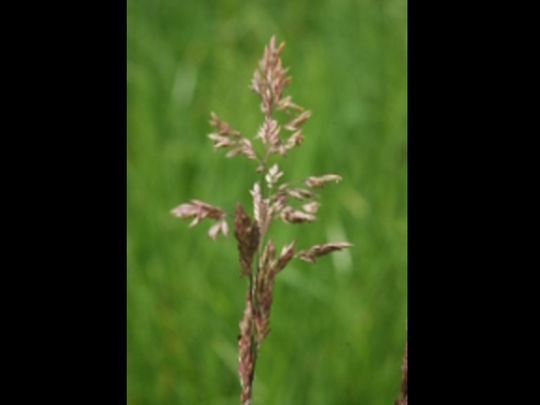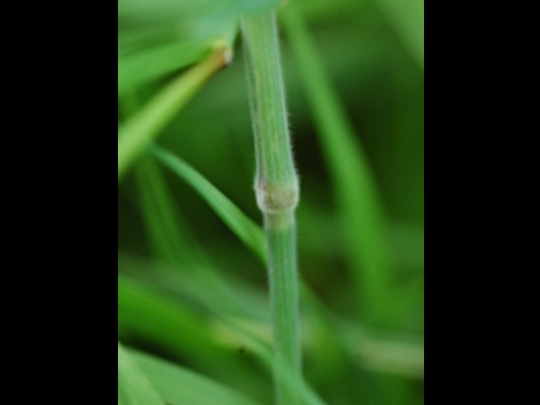Perennial tussock grass which can also produce underground stems (rhizomes). These remain within the tussock and do not produce separate flower heads. Cushiony tussock, usually remaining green throughout the winter. Height up to 100 cm; shoots early in the spring and flowers late May to August. Soft meadow grass tolerates a variety of soil conditions with varying levels of moisture. Found on mineral and peaty soils with both high and low pH levels. More prevalent on meadows than pastures. Easily recognisable by its reddish brown flower heads. Grazing animals tend to avoid it due to the covering of hairs, and only eat it when it is young. Produces light, poor quality hay although the feed value of 4 is still adequate. Yorkshire fog is regarded as a weed under certain circumstances, but it can be controlled by intensive mowing and encouraging more desirable species. It is a main constituent in “hay meadow seed” due to its early maturity.
| Leaf | Leaf rolled in bud, leaf sheath open. Leaf blade open, upper and lower surface of the leaf soft and covered in velvety hairs. Lightly ribbed. Large, heavily fringed, white ligule. Auricles absent. Colour bluish-green to greyish-green. Leaf base often with reddish stripes. |
| Culm | Culm erect, slightly geniculate up to approx. 100 cm tall. Side shoots often at the lower internodes. Shoots early. |
| Inflorescence | True panicle usually with just 2 side branches on the lower levels. Inflorescence spread only during flowering, otherwise lying flat against the main axis like a spike. Spikelets flat, ovate with only 2 florets, of which the lower one is hermaphrodite and the upper one male. Colour pinkish-white or purplish-brown. Glumes fringed with hairs, lemma smaller and enclosed by glumes, with hook-shaped back awn. |
| Fruit | Grain 2–3 mm long and up to 1 mm wide, enclosed by the paired glumes. The grain itself is awnless. The soft, shiny yellow lemma completely encases the caryopsis. TSW approx. 0.4 g. |

